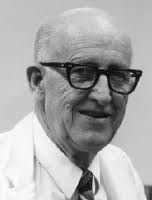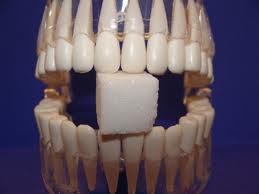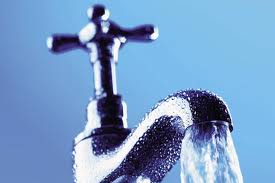Protecting and Treating
Your Teeth and Gums - Part II
Your Teeth and Gums - Part II
In an effort to entirely avoid tooth and gum problems, Gerald Judd spent years researching this topic. Gerard F. Judd, Ph.D., is Professor Emeritus of Chemistry at Purdue University. In his storied career, he was an industry researcher for 18 years and a chemistry professor for 33 years. In addition, he was a speaker, writer, radio host, and author of several books including Chemistry: Its Uses In Everyday Life.
Chemistry at Purdue University. In his storied career, he was an industry researcher for 18 years and a chemistry professor for 33 years. In addition, he was a speaker, writer, radio host, and author of several books including Chemistry: Its Uses In Everyday Life.
 Chemistry at Purdue University. In his storied career, he was an industry researcher for 18 years and a chemistry professor for 33 years. In addition, he was a speaker, writer, radio host, and author of several books including Chemistry: Its Uses In Everyday Life.
Chemistry at Purdue University. In his storied career, he was an industry researcher for 18 years and a chemistry professor for 33 years. In addition, he was a speaker, writer, radio host, and author of several books including Chemistry: Its Uses In Everyday Life. Having lived his entire adulthood observing the chemical nature of everyday life, Dr. Judd turned his attention to a subject which concerns every human being—the good health of our teeth and gums. In 1997, he penned the book Good Teeth, Birth to Death: The Prescription for Perfect Teeth.
According to the American Dental Association, there is an epidemic of tooth decay in America. Over 40% of American’s over 65 years old and 25% over 44 years old have no natural teeth remaining. Forty-four-year-olds have had an average of 30 cavities, 17-year-olds an average of 13, blacks and poor whites have twice this incidence, and Native Americans have even higher rates.
In his book Good Teeth, Birth to Death, Dr. Judd describes the chemistry that is the basis of tooth decay and gum disease. He states that he has learned the real causes of dental cavities and gum infection, and that an overwhelming amount of dental research proves the following (1):
Cavities / Decay
- Only acids—which are introduced into the mouth from food and drink—are capable of eroding tooth enamel (calcium hydroxy phosphate), and causing cavities. Protons of the acid quickly pull phosphate from the enamel. Food and drink not containing acids have no action on tooth enamel.
- Sugars are not capable of having any action on tooth enamel. Sugars (fructose, glucose, and sucrose) were found in Dr. Judd’s laboratory studies to be unable to dissolve calcium phosphate to any extent, even in a hot water solution. The reason for this is that the chelation process of sugar toward teeth is slow due to the large size of the molecule and perhaps due to the particular shape of the chelate formed. Sugars are not the cause of tooth cavities to any great extent, but still it would do no harm to rinse them off the teeth after consuming candy, especially the sticky variety. The adhering barrier will prevent re-enamelization.
- Bacteria are not capable of having any action on tooth enamel. Both human and animal
 remains show teeth and bones are resistant to earth-bound organisms such as bacteria. Teeth cannot be affected by bacteria, because enamel contains no carbon or hydrogen upon which bacteria subsist. Study of Streptococcus mutans as a source of so-called “decay” is a waste of government funding which is donated to dental organizations.
remains show teeth and bones are resistant to earth-bound organisms such as bacteria. Teeth cannot be affected by bacteria, because enamel contains no carbon or hydrogen upon which bacteria subsist. Study of Streptococcus mutans as a source of so-called “decay” is a waste of government funding which is donated to dental organizations. - When acids are properly removed from the teeth, cavities do not occur. Removal of acids is easily accomplished by simply sipping water, milk, coffee, or other non-acidic liquids while eating. The acids quickly react chemically with the liquids to form hydronium ions, thereby saving the enamel.
- Harmful acids (with a pH <4.0) which attack the enamel include lemons, grapefruit, oranges, pineapple, kiwi, tomatoes, vinegar, cider, vitamin C (especially chewable) and stomach acid. The lower the pH, the more rapidly the acid’s attack
- Teeth are able to re-enamelize when clean. Teeth are best cleaned by brushing with any bar (not liquid) soap. Bar soap does an excellent job in cleaning tooth surfaces, enabling the enamel to thicken and causing the teeth to become less sensitive.
- Toothpastes containing glycerine—which most do—are very sticky, requiring over 20 rinses to remove it from tooth surfaces. Glycerine-containing toothpastes leave a residual film, preventing the teeth from proper re-enamelization. Soap, on the other hand, is removed with two rinses.
- Dietary or supplemental calcium and phosphate result in tooth re-enamelization, but only when the teeth are clean. Re-enamelization is necessary on a daily basis as enamel leaches slightly with water over decades, even in the absence of acid. Without re-enamelization, having healthy teeth is not possible.
- Abscesses can be offset by holding Cepacol ® (14% alcohol) in the mouth for five minutes.
- Fluoride
- Removal of fluoride from drinking water, toothpastes and gels saves the enzyme adenosine diphosphatase so it can deliver phosphate to calcium at the tooth surface, resulting in a beautiful enamel.
- If fluoridation were effective in preventing cavities, Native Americans would have the least cavities. They have had forced fluoridation for approximately 60 years.
- Fluoride in water at one part per million (ppm) increased tooth cavities in four large, reliable studies (7%, 22%, 45% and 10%—averaging 21%). The reason is that adenosine diphosphatase is destroyed by fluoride and calcium fluoride, which slips into the enamel, is alien to the tooth composite and makes the enamel weak, brittle and discolored.
- Methyl mercury formed from amalgams is deadly. It causes brain disease. Fillings made of quartzite and epoxy are a safe substitute.
 Fluoride is the smallest negative particle on Earth. Since the fluoride particles are so small and so intensely negative, they connect with the hydrogen enzyme molecules at very low concentrations—around 1-3 ppm. The mechanism for destruction of enzymes by fluoride has been proven by x-ray analysis. Hydrogen bonds have been shown to be broken by fluoride.
Fluoride is the smallest negative particle on Earth. Since the fluoride particles are so small and so intensely negative, they connect with the hydrogen enzyme molecules at very low concentrations—around 1-3 ppm. The mechanism for destruction of enzymes by fluoride has been proven by x-ray analysis. Hydrogen bonds have been shown to be broken by fluoride.- Avoiding fluoride prevents more than 114 ailments listed with references in Dr. Judd’s book. These 114 medical side-effects range from cancer to headaches, which are caused by levels as small as one ppm of fluoride in the water.
- Fluoride harms the economy by requiring people to purchase sources other than fluorinated water. It also harms the economy by making people dependent upon undependable professionals that know nothing about its effects. Lack of knowledge about fluoride’s detrimental effects is worldwide.
- The lethal dosage of the fluoride compound (fluoroacetic acid) for a 110 pound person is 2.5 mg, compared with 400 mg for arsenic oxide. Toothpaste companies are now required to place a warning on tubes so children will not consume enough of the 1,000 ppm (.1%) material to make them sick or cause death. This requirement arises out of lawsuits in which children were poisoned by fluoride-containing toothpaste.
- The best available data indicates about 120,000 cancer patients are killed annually because of fluoride in their drinking water. These include patients with every type of cancer. Dentists share some responsibility due to their efforts in convincing city councils to put fluoride in the water for “the children’s teeth.” The unique character of fluoride ions in destroying enzymes deserves attention.
In summary, according to Dr. Judd the health of our teeth will increase to be very nearly perfect if the regimen of water rinsing, soap brushing and taking calcium, phosphate and vitamin C in the diet is implemented. Wet the brush, swipe the bar two or three times, then brush the teeth thoroughly and the gums gently. Rinse with water three or four times. All oils are thus washed off the teeth and the gums are disinfected. The bacteria are killed by the soap. The teeth are then ready for re-enamelization with calcium and phosphate in the diet.















No comments:
Post a Comment